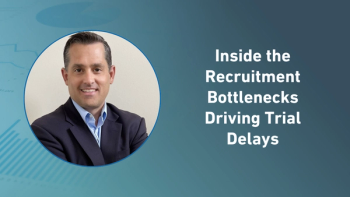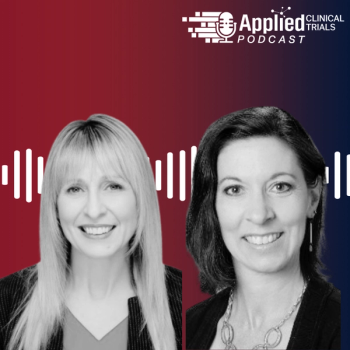
R&D in Hard-to-Treat Fungal Infections Advances
Patrick Jordan, Chief Executive Officer of Mycovia, discusses the company's strategies on tackling Recurrent Vulvovaginal Candidiasis.
Interest in developing solutions for hard-to-treat fungal infections has recently been gaining public interest. The CDC, for instance, indicated that Candida infections are growing more resistant and are a growing threat.2 Some biopharmaceutical enterprises, such as Mycovia Pharmaceuticals, are addressing fungal resistance by developing novel medical products. The company’s lead product candidate, VT-1161, is a novel, oral therapy for chronic yeast infections-known as Recurrent Vulvovaginal Candidiasis (RVVC)-that is currently in Phase III clinical trials. Patrick Jordan, Chief Executive Officer of Mycovia, discusses company strategies on tackling RVVC.
Moe Alsumidaie: What challenges are you experiencing in the Phase III trials for VT-1161?
Patrick Jordan: Our Phase III study has progressed very well, and I think it’s mostly a credit to maintaining the successful Phase II design-same endpoint, same patient type, same therapy, and dosage. And many times, that's where things go wrong as you move from Phase II to Phase III, and you make a fundamental change. The only thing that we modified was increasing the scope globally. We're now recruiting in 11 countries throughout North America, Europe, and Japan-we just completed enrollment for both ongoing global Phase III VIOLET clinical trials ahead of schedule. Between our two VIOLET trials and our third Phase III clinical study, ultraVIOLET, we have enrolled more than 800 patients. This is a significant undertaking for a company of our size, but it’s critical to pursue the opportunity for RVVC treatment.
MA: Could you share more about the study’s patient population and recruitment strategy?
PJ: The two Phase III studies will have 300 patients in each. The patients come from North America, Europe, and Japan. In addition to fulfilling regulatory goals, this expansion strategyallows us to be in a position to submit to the regulatory authorities in each of these respective markets. We are also conducting a Phase III study in the U.S. to compare the efficacy of VT-1161 and fluconazole in treating the acute VVC episode in RVVC patients. We're on track to submit to the FDA under a QIDP designation in 2021, followed by Europe and Japan. Since RVVC affects women worldwide, that global scope informed our study design plans.
To recruit potential participants, we have relied on data and analytics, revisited sites that performed well, and used social media and advertisements to broaden the population. In combination, those strategies have generated keen interest and quick recruitment. We think that this drive to our study reflects the potential that our product represents.
MA: What endpoints did you select in order to measure the efficacy of VT-1161?
PJ: The Phase III program evaluates patients over a 48-week period of dosing, management, and assessment to confirm whether RVVC has been effectively treated. From our Phase II study, we know there's an extraordinarily low rate of recurrence when patients are treated with VT-1161, so we are hoping to see similar results in Phase III.
We are also assessing patient-reported outcomes on quality of life before and after treatment. The physical symptoms of RVVC are well understood and recognizable, but what has become even more profound is the emotional impact of the condition. When we’ve spoken with women about what RVVC does to them, we hear feelings of hopelessness, despair, and loss of power over their bodies. It's that emotional impact that we really need to help address, so patient-reported outcomes help us better understand our progress there.
MA: Scynexis is developing a similar medical product, Ibrexafungerp. How is VT-1161 different than Ibrexa?
PJ: Our product is in the azole drug class, exerting its activity by targeting fungal CYP51.Historically, this drug class has been the mainstay for treating fungal infections, including RVVC; however, the azoles have been hampered by several side effects that are predominantly linked to inhibition of off-target human cytochrome P450 enzymes (CYPs), which limit their therapeutic window. Marketed azoles are associated with multiple drug-drug interactions (DDIs) due to inhibition of human CYPs.VT-1161 was explicitly designed to be more selective for fungal CYP51 than the human counterparts, so we predict it will overcome these historical limitations. Our Phase II results from this hypothesis provided compelling efficacy and safety data.
In addition, as a result of the unique chemical architecture, VT-1161 has been shown in previous clinical studies to be more potent than fluconazole against Candida albicans and remains active against Candida glabrata and other non-albicans species, which are innately resistant to fluconazole. These attributes, together with the long duration of effects, uniquely position VT-1161 to provide a potentially valuable treatment option for patients and would be a significant advancement in the field of antifungal therapy.
MA: What strategies are you implementing in order to demonstrate the value of VT-1161 to payers?
PJ: Payers should be closely attuned to the cost of this condition. From a global perspective, the economic consequence in developed countries is $14 billion.1We are developing our market access strategies to focus on raising awareness of RVVC and educating payers on the burden of the disease. As payers begin to think about their reimbursement coverage, we encourage them to look at this total cost of care that's involved in women suffering from RVVC.
MA: How have you approached different capital and funding strategies to convince investors that there is a return on investment (ROI) with VT-1161?
PJ: Mycovia was born through an acquisition made by NovaQuest Capital Management, which is a specialized healthcare investment group. Traditionally, NovaQuest has made investments in Phase III assets, which put us in a real position of strength.
We are now building on that foundation with some new licensing transactions. In June, we closed a licensing agreement with the largest pharmaceutical company in China, Jiangsu Hengrui Medicine Co. Hengrui saw a big opportunity in VT-1161, recognizing that 29 million women in China suffer from RVVC.1
In October, we closed our second licensing agreement with the preeminent women's health pharmaceutical company based in Hungary, Gedeon Richter. Gedeon Richter will commercialize VT-1161 in Europe, Latin America, Australia, Russia, and other Commonwealth of Independent States (CIS) countries. So that puts us in a great position from a financing standpoint to continue our work and ready ourselves for the U.S. market. We’re excited about these opportunities to make the most for VT-1161 and the most impact for women with RVVC.
Moe Alsumidaie, MBA, MSF, is a thought leader and expert in the application of business analytics toward clinical trials, and Editorial Advisory Board member for and regular contributor to Applied Clinical Trials.
References
- Denning DW, Kneale M, Sobel JD, Rautemaa-Richardson R. Global burden of recurrent vulvovaginal candidiasis: a systematic review. Lancet Infect Dis. 2018 Nov;18(11):e339-e347. Accessed 07/31/2019.
- https://www.cdc.gov/fungal/antifungal-resistance.html
Newsletter
Stay current in clinical research with Applied Clinical Trials, providing expert insights, regulatory updates, and practical strategies for successful clinical trial design and execution.






.png)



.png)



.png)
.png)
